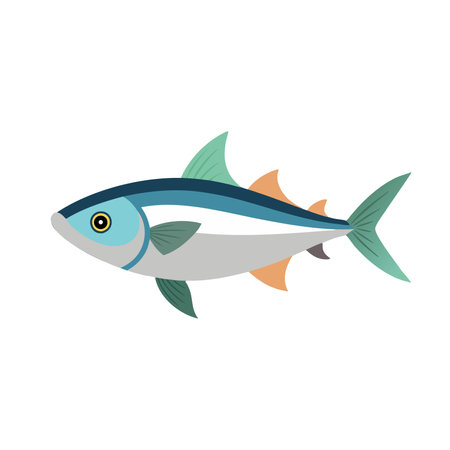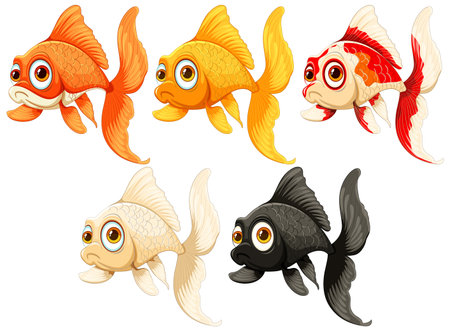1. Introduction to Catfishing in the United States
Catfishing has deep roots in American angling culture, with millions of anglers across the country targeting these whiskered bottom-dwellers each year. From muddy rivers in the South to sprawling lakes in the Midwest, catfish are among the most popular freshwater game fish in the U.S. Their wide distribution, hard fights, and delicious fillets make them a favorite for both weekend warriors and seasoned pros.
Across different regions of the country, catfishing is more than just a pastime — it’s part of a way of life. In Southern states like Mississippi, Alabama, and Texas, catfish have long been a staple on dinner tables and in fishing tournaments. Meanwhile, in the Midwest and parts of the Northeast, species like channel cats and flatheads draw large crowds during peak seasons. Even out West, catfishing is gaining ground thanks to stocked lakes and urban fishing programs.
Here’s a quick look at why catfish are such an all-American favorite:
| Reason | Description |
|---|---|
| Wide Availability | Found in almost every state, from rivers to reservoirs. |
| Variety of Species | Multiple species offer different challenges and rewards. |
| Delicious Taste | Mild-flavored meat makes catfish a popular choice for cooking. |
| Accessible Fishing | You don’t need fancy gear — bank fishing works great. |
| Cultural Tradition | From fish fries to folklore, catfish are part of American heritage. |
No matter where you fish or how much experience you have, there’s a catfish species waiting for you to catch it. In this series, we’ll explore the top 10 catfish species every angler should know — and exactly how to catch them.
2. Essential Gear and Techniques for Catfish Anglers
When it comes to landing big cats, having the right gear and using proven techniques can make all the difference. Whether youre chasing monster blues in the Mississippi or channel cats in local farm ponds, heres a breakdown of what you need and how to use it.
Rods and Reels
Catfish come in all sizes—from small bullheads to 100+ lb blue cats—so your rod and reel combo should match your target species.
| Catfish Species | Rod Type | Reel Type | Line Strength |
|---|---|---|---|
| Channel Catfish | Medium Action Spinning Rod (7 ft) | Spinning Reel | 10–20 lb mono or braid |
| Blue Catfish | Heavy Action Casting Rod (7.5–9 ft) | Baitcasting Reel | 30–80 lb braid with mono leader |
| Flathead Catfish | Medium-Heavy to Heavy Rod (7–8 ft) | Baitcasting Reel | 30–60 lb braid or mono |
| Bullhead Catfish | Light to Medium Spinning Rod (6–7 ft) | Spinning Reel | 6–12 lb mono |
Best Rigs for Catfishing
The rig you choose can help present your bait naturally and improve hook-up rates. Here are the most effective rigs used by U.S. catfish anglers:
- Slip Sinker Rig: Perfect for bottom fishing in rivers or lakes; allows catfish to take the bait without feeling resistance.
- Santee Cooper Rig: Great for drifting or still fishing; uses a float to lift bait off the bottom, ideal for blue and flathead catfish.
- Paternoster Rig: Good for strong current areas; keeps bait suspended and reduces snags.
- Tight Line Rig: Basic rig for bank fishing; ideal for bullheads and channels in calm waters.
Bait Selection by Species
The right bait is key to drawing catfish in. While stink baits work well for channels, live bait is king for flatheads. Heres a quick guide:
| Species | Bait Types |
|---|---|
| Channel Catfish | Dip bait, chicken liver, nightcrawlers, cut shad |
| Blue Catfish | Fresh cut bait (shad, skipjack), whole gizzard shad, large chunks of carp |
| Flathead Catfish | Live bluegill, green sunfish, goldfish, bullhead minnows |
| Bullhead Catfish | Nighcrawlers, stink bait, dough balls, shrimp pieces |
Pro Tips from Experienced U.S. Catfishermen:
- Use circle hooks: They improve hook-ups and reduce gut-hooking fish—especially important for catch-and-release.
- Scent matters: Catfish rely heavily on smell. Always use fresh bait or add scent attractants if needed.
- Toughen up soft baits: Wrap chicken liver in mesh netting or pantyhose to keep it on the hook longer.
- Tune into timing: Early morning, dusk, and overnight hours are prime time—especially during summer months.
- Mimic natural forage: Match your bait to what local catfish are feeding on in that body of water.
Tackle Tip:
If you’re targeting trophy-sized blues or flatheads, don’t skimp on your terminal tackle. Use heavy-duty swivels, premium hooks (#6/0 to #10/0), and abrasion-resistant leaders to handle the fight of a lifetime.
Knot Know-How:
The Palomar knot is a go-to choice among seasoned catfishermen. Its simple, strong, and works great with braided line—essential when targeting monster cats in snaggy terrain.
This essential gear list and technique guide will prepare any angler—whether youre bank fishing with buddies or out on a drift boat—for success across America’s top catfishing waters.

3. Prime Habitats: Where to Find Catfish Across America
Catfish are found in a wide range of freshwater environments across the United States. From massive rivers like the Mississippi to small southern farm ponds, each catfish species has its favorite type of habitat. Knowing where to find them is half the battle when it comes to successful fishing. Let’s explore some of the top catfish hotspots by region and water body type.
Major Rivers
America’s big rivers are legendary for producing monster catfish, especially blues and flatheads. These waters offer deep channels, submerged structures, and strong currents—ideal conditions for large catfish.
| River | States | Main Species |
|---|---|---|
| Mississippi River | MN to LA | Blue Catfish, Channel Catfish, Flathead Catfish |
| Missouri River | MT to MO | Blue Catfish, Channel Catfish |
| Ohio River | PA to IL | Flathead Catfish, Channel Catfish |
| Tennessee River | TN, AL, KY | Blue Catfish, Flathead Catfish |
| Red River (of the North) | ND, MN | Trophy Channel Catfish |
Lakes and Reservoirs
Lakes and reservoirs can be excellent spots for catching channel cats and even trophy blues. Look for areas with rocky points, submerged timber, or inflow from feeder creeks.
| Lake/Reservoir | Location | Main Species |
|---|---|---|
| Santee Cooper Lakes (Marion & Moultrie) | South Carolina | Blue Catfish, Channel Catfish |
| Lake Texoma | Texas/Oklahoma border | Trophy Blue Catfish |
| Barkley & Kentucky Lakes | Kentucky/Tennessee border | Channel Catfish, Blue Catfish |
| Tawakoni Lake | Texas | Blue Catfish, Channel Catfish |
| Mendota Lake | Wisconsin | Trophy Channel Catfish (Northern strain) |
Ponds and Small Creeks (Especially in the South)
The South is dotted with countless private and public ponds stocked with channel cats. These smaller bodies of water are great for beginners and kids learning how to fish. They’re also easy to access and often respond well to basic baits like chicken liver or stink bait.
Best States for Pond Fishing:
- Georgia: Known for well-stocked farm ponds filled with channel cats.
- Alabama: Offers public access to many managed ponds and small lakes.
- Mississippi: Great state-run pond programs that provide consistent action.
Tips for Finding Productive Spots:
- Use local DNR websites: Most states list public fishing lakes and stocking reports.
- Talk to locals: Bait shops and local anglers know which spots are hot.
- Look for structure: Whether in a pond or river, catfish love cover like logs, rocks, or drop-offs.
No matter where you live in the U.S., chances are there’s a prime catfishing spot not far away. Matching the right species with its preferred habitat is key to landing more fish—and bigger ones too!
4. Top Catfish Species American Anglers Target
Across the United States, catfishing is a favorite pastime for many anglers. From rivers and lakes to reservoirs and ponds, catfish can be found in a variety of waters. Let’s take a closer look at the most popular catfish species targeted by American anglers, their unique traits, habits, and how to successfully catch them.
Channel Catfish
Channel catfish are the most widespread catfish species in the U.S. They’re commonly found in lakes, rivers, and streams. Known for their willingness to bite on a variety of baits, they’re perfect for beginners and seasoned anglers alike.
Key Characteristics:
- Forked tail
- Olive to light blue coloring with spots along the body
- Average size: 2–10 lbs, but can grow larger
Best Baits:
- Stink bait
- Chicken liver
- Nighcrawlers
- Cut bait
Tips for Catching:
Fish near bottom structure like logs or rocks using a slip-sinker rig. Evening and nighttime are often the best times to catch them.
Blue Catfish
The blue catfish is the largest catfish species in North America. Theyre powerful fighters and a major target for trophy hunters.
Key Characteristics:
- Straight-edged tail (unlike channel cats)
- Pale blue to slate-gray color
- Can exceed 100 lbs in weight
Best Baits:
- Fresh cut shad or herring
- Live bait (sunfish or perch)
Tips for Catching:
Target deep holes in large rivers or reservoirs. Use heavy tackle and be prepared for a serious fight.
Flathead Catfish
Flatheads are known for their preference for live bait and their solitary nature. They’re elusive but offer a rewarding challenge.
Key Characteristics:
- Smooth, flat head and broad mouth
- Mottled brown/yellowish body color
- Tends to hide in submerged cover during daylight hours
Best Baits:
- Live sunfish or bluegill
- Bullhead catfish (check local regulations)
Tips for Catching:
Casting near submerged trees, undercut banks, or rock piles during dusk or at night increases your chances.
Other Notable Species Found in U.S. Waters
| Species | Main Regions Found | Bait Preference | Notes |
|---|---|---|---|
| White Catfish | Southeastern U.S., coastal rivers | Nighcrawlers, shrimp, cut bait | Smaller than blues/channels; good eating quality |
| Bullhead Catfish (Black/Yellow/Brown) | Nationwide, especially small lakes/ponds | Dough balls, worms, stink baits | Great for beginners; active feeders day & night |
| Madtom Catfish (Various species) | Northeastern & Midwestern streams | Tiny insects, worms | Tiny size; often used as bait themselves! |
| Pictus Catfish* | Aquarium fish; not native game fish | N/A (not caught in wild) | *Often confused with native species; not found in U.S. waters naturally. |
The diversity of catfish across the U.S. offers anglers endless opportunities to test their skills with different species and techniques. Whether youre after numbers or trophies, there’s a catfish out there waiting for your hook.
5. Catch, Care, and Conservation: Responsible Catfishing
As anglers, its our job to protect the waters and fish we love. Whether youre targeting monster blue cats in the Mississippi or channel cats in a local pond, responsible catfishing practices help ensure future generations can enjoy the same thrill. Heres how you can make a difference while still landing those big whiskerfish.
Best Practices for Handling Catfish
Proper handling keeps both you and the fish safe. Catfish have strong spines on their pectoral and dorsal fins that can cause injury if not handled correctly. Follow these tips:
| Handling Tip | Why It Matters |
|---|---|
| Wet your hands before touching the fish | Protects the fish’s slime coat which defends against disease |
| Grip behind the pectoral fins | Avoids getting finned and gives you good control of the fish |
| Support larger fish with both hands | Prevents internal injuries caused by improper lifting |
| Minimize air exposure | Improves survival rates if youre releasing the fish |
Sustainable Harvest Methods
Catching catfish is fun, but overharvesting can hurt local populations. Heres how to keep it sustainable:
- Follow state regulations: Each state has its own rules on size limits, bag limits, and seasons—know them before you go.
- Keep only what you need: Don’t take more than you plan to eat. Release larger breeding-size fish when possible.
- Use circle hooks: They reduce deep hooking, making it easier to release fish unharmed.
- Avoid spawning season harvests: Let catfish spawn in peace so they can repopulate naturally.
Contributing to U.S. Fisheries Health
You don’t have to be a scientist to help protect American fisheries. Here are simple ways every angler can pitch in:
- Report tagged fish: Some wildlife agencies tag catfish for research—report your catch to help studies.
- Join clean-up events: Keeping rivers and lakes clean benefits all aquatic life.
- Practice catch and release wisely: Especially for trophy-sized flatheads or blues that play key roles in reproduction.
- Educate others: Share responsible fishing habits with newcomers and young anglers.
Pro Tip:
If youre targeting big trophy cats, consider CPR—Catch, Photo, Release. Snap a quick photo and let that beast swim another day!
Your Role as a Steward of the Water
The thrill of catfishing comes with responsibility. By practicing ethical angling, respecting regulations, and promoting conservation, youre not just catching fish—youre protecting an American tradition.


